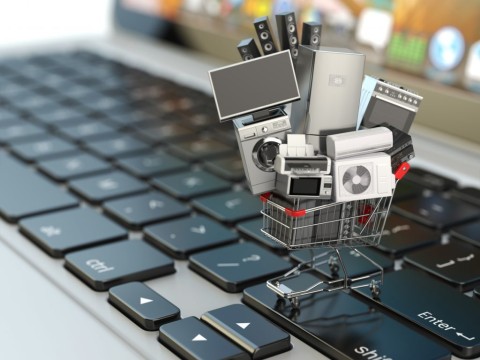
4 problems facing consumer electronics and what to do about them
Let’s face it. Working in supply chain is no walk in the park. Unless of course you’re walking barefoot and the ground is covered in razor-sharp pebbles that randomly change location. Then maybe it’d be comparable. The fact is, while supply chain is big business for most companies, it also comes with a whole new set of challenges unique to its many processes, data requirements and functions. But depending on which industry you work in, your specific set of supply chain pain points could vary greatly. This blog series takes an in-depth look at some of the specific supply chain obstacles certain industries face, and how to potentially overcome them. First up is consumer electronics.
Relatively short product lifecycles (typically 6-9 months) with multiple feature changes throughout
This creates an atmosphere full of risk. With so many changes happening over the course of the lifecycle, you’re likely carrying extra inventory to make sure you have enough stock on hand to cover any part substitutions or adjustments. That means higher carrying costs and a greater risk to your bottom line if the product ends up as slow moving, excess or obsolete inventory. Solution: Create multiple supply chain policies that reflect the changing lifecycle demand patterns, preferably using attribute-based planning. Adding in the ability for multiple what-if scenario simulation means you’ll be able to compare and contrast plans based on price curves, customer segments and/or new markets to see which produces the best result at any given time.
Multiple partners across a global supply chain network
With so many partners involved on a product’s journey from raw materials to delivered finished goods, you’re likely facing a situation with multiple and latent data sets. That’s not exactly the ideal for creating strong visibility across your supply chain. The result of this lack of visibility means you’re constantly re-working plans as updated numbers trickle in from your partners and suppliers. Plus, it leaves you blind to unexpected changes or unanticipated risks like a partner failing to deliver components on time. You won’t know the problem is coming until its right on top of you and already too late to compensate for it. Solution: You have to plan as a single, harmonious end-to-end network. That means capturing all master and transactional data in one system – including details from your partners – and working from that single source of truth. This dramatically reduces the time it takes to gather current data and search for any exceptions or issues that need your attention. Make sure you can aggregate down to the SKU level to reduce production variability, fulfillment and transportation costs. You’ll also want to set control limits on things like international standards, customs requirements and other regulated compliances.
Integration speed for mergers and acquisitions
The longer it takes to integrate data from a newly acquired company, the slower you’ll see the payoff. As mergers and acquisitions often play a vital role in company expansion in the consumer electronics industry, it’s also likely you’re looking at a host of disparate enterprise resource planning (ERP) systems – and as most people who’ve worked in supply chain will agree, they don’t typically play well together. Solution: Be ERP-agnostic. The faster you can merge the data, analytics and planning logic of the new ERP system into your planning solution, the faster you’ll see the payoff of your investment. Ideally your planning solution can pull data and model the behavior of multiple ERP systems. There are solutions out there that can lay overtop of your existing multiple ERP systems and automatically pull all the data in to a nice, clean package where you can manipulate it, analyze it and generally not have to deal with the headache of reconciling it all in spreadsheets. That will eliminate multiple data sets, greatly reducing your inventory and cost risks. Why? Because you’ll actually be planning with a complete, current set of data.
Balancing daily decisions happens at a snail’s pace
Every day is a new balancing act as you work diligently to find the right harmony between costs, revenue and service. But aligning them all means collaborating with co-workers, and sadly coming to a consensus on where tradeoffs should happen isn’t always their top priority – or even their twentieth. It becomes a battle to get everyone on board, after all, someone’s likely conceding in an area they wish they weren’t. That slows down the entire decision-making process and weighs you down when trying to respond to changes in supply, demand or capacity. Solution: Bring in lots of baked goods – particularly ones involving chocolate. And when that doesn’t work, get down to brass tacks and show them how each of the prospective tradeoffs stacks up against your company’s key performance indicators. That way they’ll clearly see a decision’s impact on revenue, profitability, service, margin and costs. With the numbers clearly in front of them, they’ll have an easier time deciding on the right course of action, and you’ll be able to implement changes faster. Things will go even quicker if you have a supply chain solution in place that allows for real-time cross-functional collaboration right within the platform. No more clicking the refresh button in your email inbox to see if they’ve responded yet. These are just a few of the specific consumer electronics supply chain pain points. What other challenges are you facing in your supply chain? Let us know in the comments section below. And don’t forget to check back for the next blog in the supply chain pain points series.




